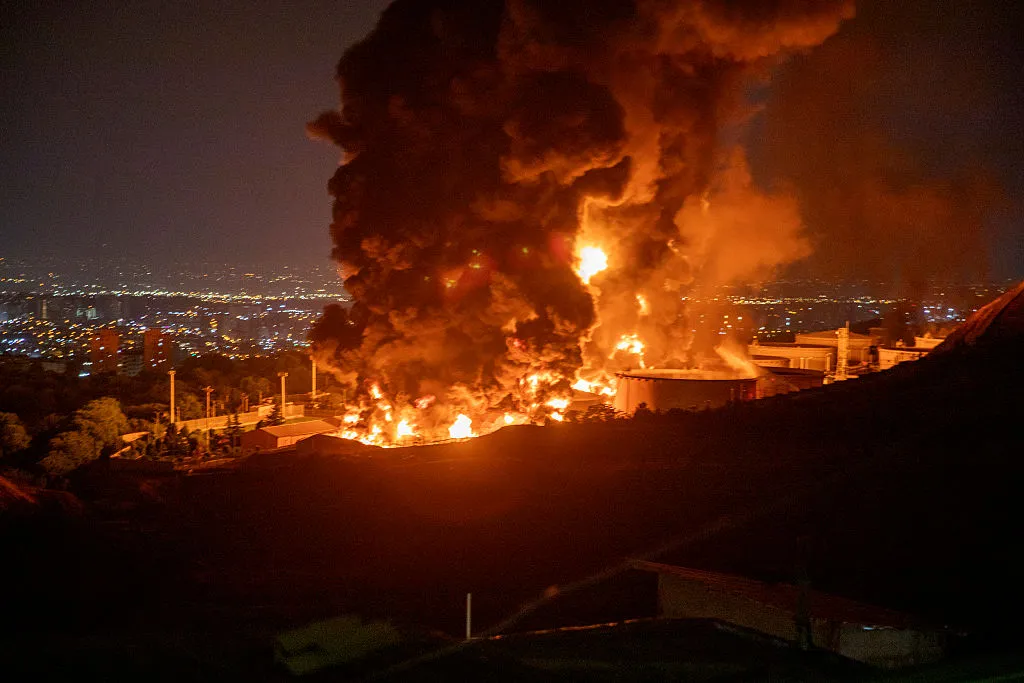On June 22, 2025, the United States dramatically escalated the Israel–Iran conflict by launching Operation Midnight Hammer—a coordinated airstrike employing B‑2 Spirit stealth bombers, 30,000-pound bunker‑buster bombs, submarine-launched Tomahawks, and over 125 supporting aircraft targeting Iran’s nuclear facilities at Fordow, Natanz, and Isfahan. President Trump called it a “historic success,” declaring Iran’s key nuclear installations “obliterated” and warning that further strikes await unless Iran “makes peace”
⚙️ Military Strategy and Asymmetric Retaliation
U.S. objectives were clear: degrade Iran’s nuclear capabilities without triggering full-scale war. The mission’s surgical precision—demonstrated by 14 Massive Ordnance Penetrators at Fordow—reflects advanced military confidence. Iran responded swiftly with Operation Annunciation of Victory, launching missiles at U.S. bases in Qatar and Iraq. Though intercepted and symbolic in nature, these strikes signal Tehran’s intent to resist.
🌍 Diplomatic Fallout and Global Voices
World powers reacted strongly. China condemned the bombings as “provocative” and called the U.S. credibility into question, urging diplomatic channels via the U.N. Security Council . Russia, Pakistan, and EU leaders echoed the call for restraint and multilateral diplomacy . UN Secretary-General Guterres described the strikes as a “dangerous escalation,” and the IAEA held emergency consultations over non‑proliferation risks.
Simultaneously, Western support has been more muted. The UK publicly endorsed urgent talks over military escalation, while Germany and France refrained from direct participation.
💹 Economic Shockwaves
Markets reacted immediately. Brent crude spiked to around $79/barrel before stabilizing, while gold saw a brief rally. Analysts believe Iran is unlikely to shut the Strait of Hormuz—20% of global oil flow—due to economic self-harm. Yet for now, a $10-per-barrel risk premium persists amid heightened nervousness home.saxo. U.S. equities and Treasuries experienced safe‑haven inflows, while central banks like the Fed and ECB face renewed pressure to balance inflation and turmoil .
🔮 What Comes Next?
Strategic calculations dominate Tehran’s decision-making. Iran risks widespread fallout with heavy retaliation but needs to show strength. It could target U.S. forces in the Gulf or fuel proxy warfare through the “Axis of Resistance” in Iraq, Lebanon, or Yemen.
The immediate future hinges on whether back-channel diplomacy—or global mediation—can temper the cycle of strikes. Alternatively, escalation could expand regionally, disrupting oil markets, Emirates trade, and NATO summit cohesion.
Bottom line: Operation Midnight Hammer was a potent display of U.S. military power—but with no guarantee it will reshape Iran’s nuclear ambitions. As markets jitter and world leaders urge caution, the real test lies in whether diplomacy or disaster will define the next chapter of this crisis.


3 comments
Neque porro quisquam est, qui dolorem ipsum quia dolor sit amet, consectetur, adipisci velit, sed quia non numquam eius modi tempora incidunt ut labore.
Quis autem vel eum iure reprehenderit qui in ea voluptate velit esse quam nihil.
Et harum quidem rerum facilis est et expedita distinctio. Nam libero tempore, cum soluta nobis est eligendi optio cumque nihil impedit quo minus id quod maxime placeat facere.